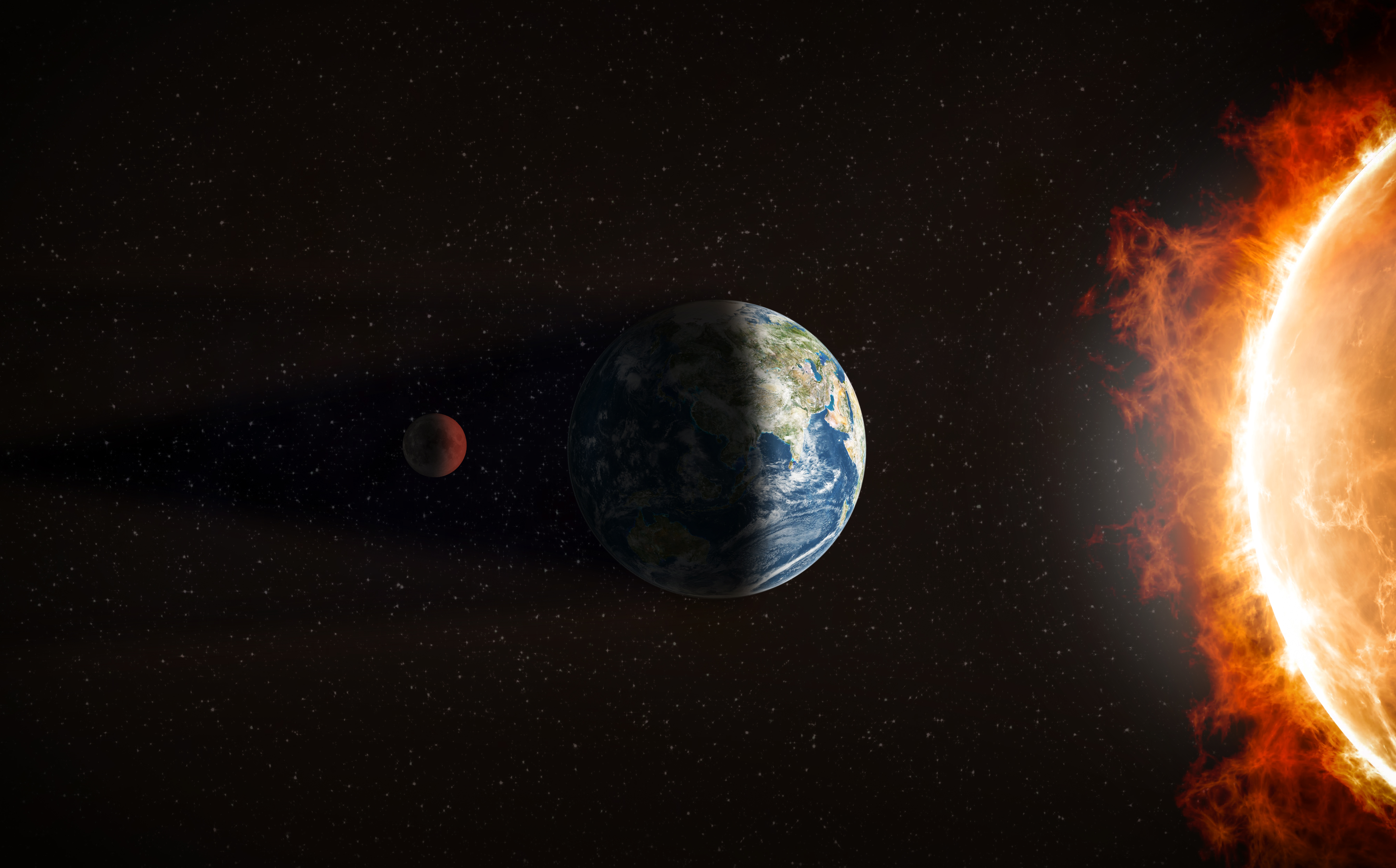Touching the Sun
The Sun, the fiery heart of our solar system, has fascinated humanity for centuries. Despite the progress of modern science, many of its secrets remain locked away, particularly the mysteries of its outer atmosphere, the corona.
The eclipse will be visible in the region covering the Western Pacific Ocean, Australia, Asia, Europe, Africa, eastern South America, northeastern North America, the Atlantic Ocean, the Indian Ocean and the South Pacific Ocean

(Image: iStock)
A partial lunar eclipse will occur on 28-29 October 2023 (6-7 Kartika, 1945 Saka Era). Though the Moon will enter penumbra at midnight of 28th October, the umbral phase will start in the early hour of 29th October. The Eclipse will be visible from all places of India around midnight.
The eclipse will be visible in the region covering the Western Pacific Ocean, Australia, Asia, Europe, Africa, eastern South America, northeastern North America, the Atlantic Ocean, the Indian Ocean and the South Pacific Ocean.
Advertisement
The umbral phase of this eclipse will begin at 01 hr. 05 min IST on 29th October and will end at 02h 24m IST.
Advertisement
The duration of the Eclipse will be 1 hour 19 minutes with very small magnitude 0.126.
The next lunar eclipse will be visible from India on 07 September 2025 and the same will be a total Lunar eclipse.
The last lunar eclipse which was visible from India was on 8 November 2022 and it was a total eclipse.
Lunar Eclipse occurs on a full moon day when the earth comes in between the Sun and the Moon and when all three objects are aligned. A total lunar eclipse will occur when the whole moon comes under the umbral shadow of the Earth and a partial lunar eclipse occurs only when a part of the moon comes under the shadow of the Earth.
Advertisement